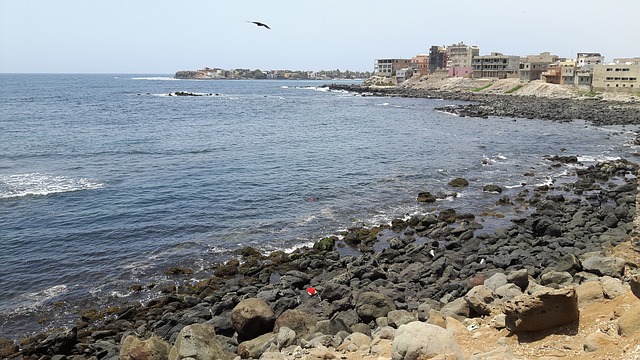By Tim Lambert
Early Senegal
The first human beings in Senegal were hunters but by about 3,000 BCE they had learned to farm. About 500 BCE knowledge of how to make iron tools reached West Africa. By 500 AD a sophisticated society arose in Senegal capable of building stone circles. Towns and trade flourished. In the 13th century, the Empire of Mali included much of western Africa including Senegal. However, the power of Mali declined in the 15th century and Senegal broke up into small kingdoms.
Meanwhile, Europeans were exploring the coast of West Africa. The Portuguese landed on Cap Vert in 1544. The Portuguese began to trade with the Africans and their influence gradually grew. However, in the early 16th century, the Portuguese settled in Brazil and they needed slaves to work sugar plantations there. So they began to import slaves from West Africa. Slavery was not new in Senegal but the Portuguese took huge numbers of slaves from the area.
In the later 16th century the English joined the slave trade. In the early 17th century so did the Dutch and the French. The Dutch established a trading station on Ile de Goree in 1617. The French established a trading station in 1639 and 1677 they took Ile de Goree from the Dutch.
During the 18th century, the slave trade flourished. Europeans persuaded Africans from the coast to attack neighboring tribes and take captives. The captives were exchanged for goods like guns and cloth. They were then shipped across the Atlantic in appalling conditions. However the British banned the slave trade in 1807.
In the 19th century, the British became the ruling power along the River Gambia but the French advanced inland along the River Senegal. In 1884-85 the European powers divided up Africa. France was confirmed as the colonial power in Senegal.
Modern Senegal
In the early 20th century Senegal was a prosperous colony exporting groundnuts. However, in the 1950s demands for independence grew in Senegal. Finally, Senegal became independent on 20 June 1960. At first, Senegal was joined with Mali but the union was short-lived. Senegal became a separate nation on 20 August 1960. Leopold Senghor became the first leader. He introduced a new constitution in 1963. Senghor stepped down in 1980. He was replaced by Abdou Diouf. Diouf in turn was president of Senegal until 2000. He was replaced by Abdoulaye Wade.
Today Senegal is still a poor country. However, its economy is growing rapidly. Senegal has great tourism potential. Today Senegal is developing quickly. In 2024 the population of Senegal was 18 million.

Last Revised 2025